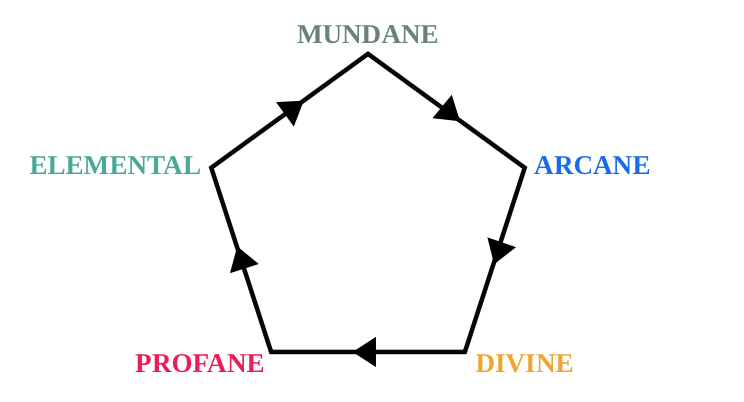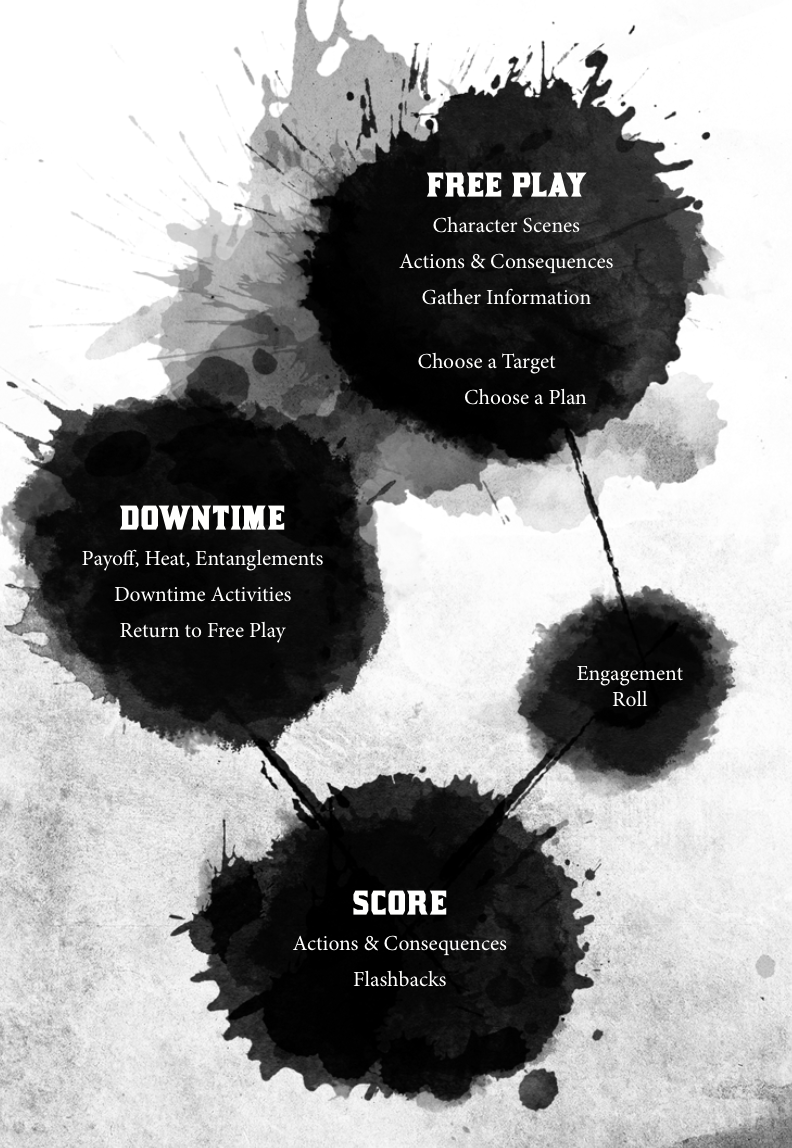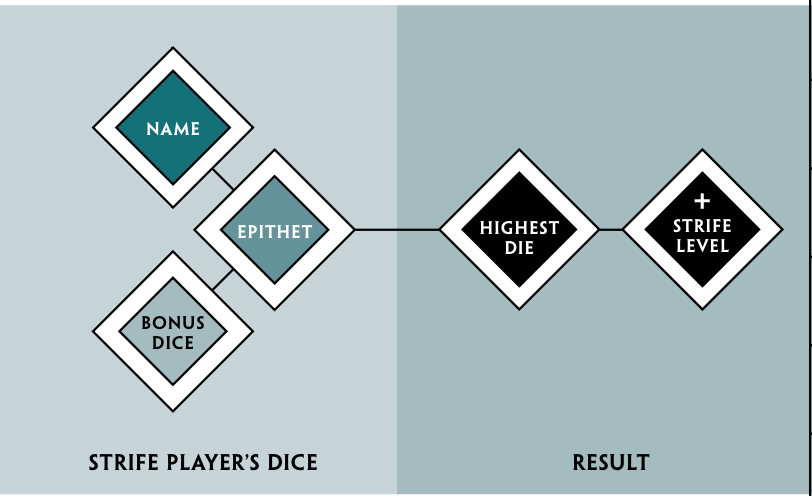If You Can't Simplify, Reference
A few sessions into the ICON campaign I’m playing in, I was struck by how much smoother the game played than its d20 cousins. There are drastic simplifications and streamlining choices made throughout the game text, but ICON’s true advantage is in its layout.
In ICON, there are five different types of movement and a few types of movement-impairing effects. All characters have access to standard moves, which allow them to move a certain number of grid squares. Movement can be taken at any point within a turn, but it can’t be interrupted and resumed (unlike in D&D 5e, where movement is a pool that can be expended between other actions). Three effects increase the cost of moving: difficult terrain, engagement with foes, and terrain height. Difficult terrain is a per-square modifier which increases the cost to exit by +1 movement; spaces adjacent to foes work the same way. Moving to a higher space costs movement equal to the height difference. These are all pretty easy to remember and straightforward.
Where we’ll run into trouble is when we start stacking exceptions:
- Dash is a special movement type that ignores engagement (but not difficult terrain or height)
- Fly ignores engagement, terrain, and all obstructions
- Teleport instantly moves a character from one square to another (so it’s not quite movement)
- Rush movement makes the character unstoppable and immune to all damage
- Unstoppable characters are immune to statuses, cannot be moved by foes, and ignore engagement
- I don’t think rush affects difficult terrain or terrain height, but I’m not 100% sure
Got all that? The cherry on top is rampart: “foes cannot enter or exit a space affected by a rampart effect by dashing, flying, or teleporting” (page 104). Both PC and enemy tank characters often apply rampart to the area around them.
How is the game playable with five movement types that all intersect differently with four different obstructions? The answer is the “combat glossary.” The game sets aside four pages to quickly define every bolded keyword, even if its canonical definition is elsewhere in the book. During play someone will say something like “can I teleport out of rampart?” or “does fly trigger vigilance?” and someone else can instantly jump to that section of the PDF and consult the rules[1]. This glossary also isn’t the only place ICON sets aside space to redefine terms. Each combat class and sub-class (called “job”) has a quick review of relevant rules, like rampart for the tanky Stalwart or dash for the rogueish Vagabond.
Reference Lightning Round
From some games I’ve played, here are other reference materials that have made an easy-of-play difference!
In my first few sessions as Director, I relied heavily on this type-matchup chart from Armour Astir: Advent:

Likewise, when I was a baby GM running Blades in the Dark as my first game, the inkblot phases-of-play were invaluable:

Lots of John Harper games are really good about this actually, here’s a chart from Agon that clears up some fiddly GM rules for assembling a dice pool:

If you have favorite reference materials or layout decisions that you want to leave as a comment, shoot me an email, ryan@fools-pyrite.com.
Equivalent moments in Starfinder could take minutes of searching through the rules (often elided with a GM ruling, because we’d rather be wrong than waste time being right). ↩︎
